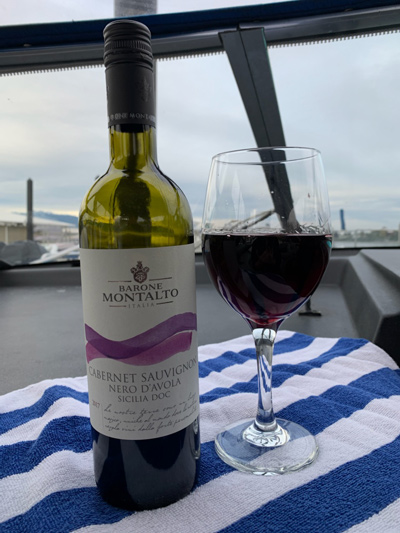My next-door neighbors are also boaters, and I was recently invited to their house for a social-distance happy hour. I took my chair, snacks, disinfecting wipes, glass, and wine. It was weird, there were no big hugs, and we stayed on the front lawn, in our separate chairs, six feet apart. We started our conversation with a few comments to address the awkwardness, and then we started talking about boating.
How was the boat? Is the winter cover off? Have you done the bottom paint? Zincs? New gear? When are you heading out? Then it got weird again.
At the beginning of the pandemic, many of us thought, “Piece of cake. I am just going to embrace all of this isolation and spend the summer on the boat.” Then the reality hit, and our world started closing in. Marine parks closed. Boat ramps closed. Island destinations closed. Outstations and yacht clubs, all closed. The Coast Guard announced a restriction of all marine activities to essential travel only. Now, what to do?
Not to make light of a very difficult situation, but I thought it might be time to turn off the TV and find a distraction. I set out to revisit a time-honored boating dilemma that my girlfriends and I discuss every summer at the beginning of boating season. We do our homework, put together a list, and then come together for our annual pilgrimage to answer this age-old question: Why can’t we find a drinkable boxed wine?
It just makes so much sense on the boat. No breakable glass bottles and the plastic bladders take up less space and offer more wine. There is less garbage, and there is also a tap that keeps oxygen out so the wine can last up to four weeks once opened (Although this last benefit isn’t always relevant).
A standard 750 ml bottle of wine holds about five glasses of wine, whereas a typical box holds four bottles of wine or twenty glasses, give or take depending on the pour size. Boxed wine got a bad rap initially because wineries used them to offload some of their less popular blends. Then there was the lawsuit that claimed that some boxed wines contained high levels of arsenic. This is all in the past now, and many boaters swear by their cardboard varietals.
 For many years, my go-to white wine was from Robert Mondavi because it was available in a magnum. That was a start. Because of the large bottle size, I had to ration my consumption, and everyone on the dock thought this was very entertaining. Especially when, “day one Missy” was on “day two Bob.”
For many years, my go-to white wine was from Robert Mondavi because it was available in a magnum. That was a start. Because of the large bottle size, I had to ration my consumption, and everyone on the dock thought this was very entertaining. Especially when, “day one Missy” was on “day two Bob.”
My new go-to CBG (cheap but good) is a red wine from Italy called Montalto Sicilia Nero D’Avola. But unfortunately, it’s only available in a regular-sized wine bottle. I have called and emailed the vineyard several times to ask them why they can’t put their wine in a bladder. No response. Some of my friends buy plastic bladders on Amazon and fill them with their favorite wines, but this is just too much work for me. As my Italian is getting better and better, I plan to just keep calling.
This year our group of want-to-be sommeliers expanded the quest to include Tetra Paks and cans. Tetra Paks hold 500 ml of wine, although there are a few one-serving, mini Tetra Paks available, which are quite perfect for a quiet lunch on the beach or to toss in a backpack. When they are finished, you can roll them into a tiny ball, so they don’t take up a lot of room in the recycling bin.
Last summer, my sister Heidi hooked me up with bubbles in a can. Occasionally, I enjoy a glass of champagne or rosé in the afternoon, but don’t want to open a whole bottle and have it go flat. She gave me The Bubbles by Underwood, and it was dee-lish. Until then, I had never considered wine in a can, so I was surprised at all the available options.
These single-serving vin vessels have clever names, beautiful labels, and an incredible mix of flavors, including watermelon, cranberry, grapefruit, peach, and citrus. The advertising claims that they are the perfect solution for drinking alone, or when you want red and your guests want white.
I will keep trying, and I know I will find a new corrugated favorite; however, there is still a challenge with the optics. When I spend the time to set a beautiful table or make a creative appetizer to take to a dock party, I don’t want to put a box or Pak on the table. They are the sweatpants of the wine world. To solve this, I purchased a beautiful decanter on Amazon, that is made of BPA-free, high quality, shatterproof plastic, and even has a built-in aerator. Very Jackie O and no one has to know.
I hope we will all be raising a glass on the back deck soon. If you have a favorite, please send your recommendations my way at Missy@missygoesboating.com. This is the kind of homework I don’t mind doing.